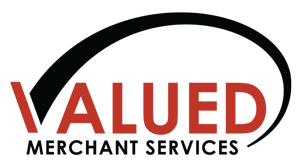The typical business day never seems to have enough hours for busy entrepreneurs. Using a variety of time-saving processes can reduce some of the challenges that business owners often endure. The Automated Clearing House offers a highly convenient method for the delivery or the receipt of electronic payments.
About ACH Payments
Paperless processing has made ACH payments a popular way to transfer funds. Using a checking account, a cardholder can set up automatic payments for recurring bills or for one-time payment transactions.
The ACH processes debit and credit transfers.
Benefits of Automated Clearing House Payments
Safety is an overlooked benefit of Automated Clearing House payments. Quite often, an account holder might feel as if a greater risk exists, when using his bank’s routing number and checking account number to establish recurring payments for a monthly bill. The process is performed once, and it is generally completed within a few minutes. whereas, the opportunity to expose a payer’s account details could increase with each presentation of a paper check.
There are typically no costs involved for a consumer to receive an ACH payment.
In fact, many employers use the added convenience to send employees a direct deposit payment versus handing out paper payroll checks.
Various government agencies also send automated payments to consumers who are eligible to receive a tax refund, social security income and other recurring benefits.
ACH payments are eco-friendly, as an enormous number of trees would be needed to fulfill the paper requirements for annual ACH transactions.
According to the 2019 Federal Reserve Payment Study, “Total ACH payments are estimated to have reached 28.5 billion with a value of $64.16 trillion in 2018, an increase of 4.6 billion and $12.08 trillion since 2015. Total ACH payments grew at an accelerated rate of 6.0 percent per year by number and 7.2 percent per year by value from 2015 to 2018, compared with 4.9 percent by number and 4.1 percent by value from 2012 to 2015. ACH payments accounted for 66.1 percent of the value of all non-cash payments in 2018, up from 60.0 percent in 2015. By number, ACH payments were 16.4 percent of all non-cash payments in 2018, down from 16.7 percent in 2015.”
Making an ACH Payment
Essentially, an account holder would need to provide a biller with her bank’s routing number and with her checking account number. On the date indicated, the electronic payment processing can begin. The biller’s bank will request the applicable amount from the payer’s bank for a specific bill payment or toward a purchase.
Automated Clearing House transactions may be initiated by phone or online. However, some banks might offer ACH payment processing to accelerate the funding of paper checks.
Processing ACH Payments
Banks typically process ACH payments several times per day. However, unless an item is specified for same-day or next-day funding, a merchant can expect a period of two to five days to receive the funds via an electronic deposit.
Cost of ACH Payments?
To maintain support and to provide a safe infrastructure for Automated Clearing House payments, business owners pay ongoing processing fees. The precise costs will vary among service providers. Generally, a merchant will be charged a flat fee for each transaction and/or a certain percentage rate on the transaction amount.
Other costs to process ACH transactions, such as set up fees, equipment charges, fees for transactions below a certain threshold and other items may be factored into a company’s ACH costs.
Summary
Bank-to-bank ACH payments provide expeditious solutions for payers and for billers.
Business owners notice more favorable profit margins with low-cost payment processing.
Contact Valued Merchant Services today to discuss attractive ways to process electronic payments.
